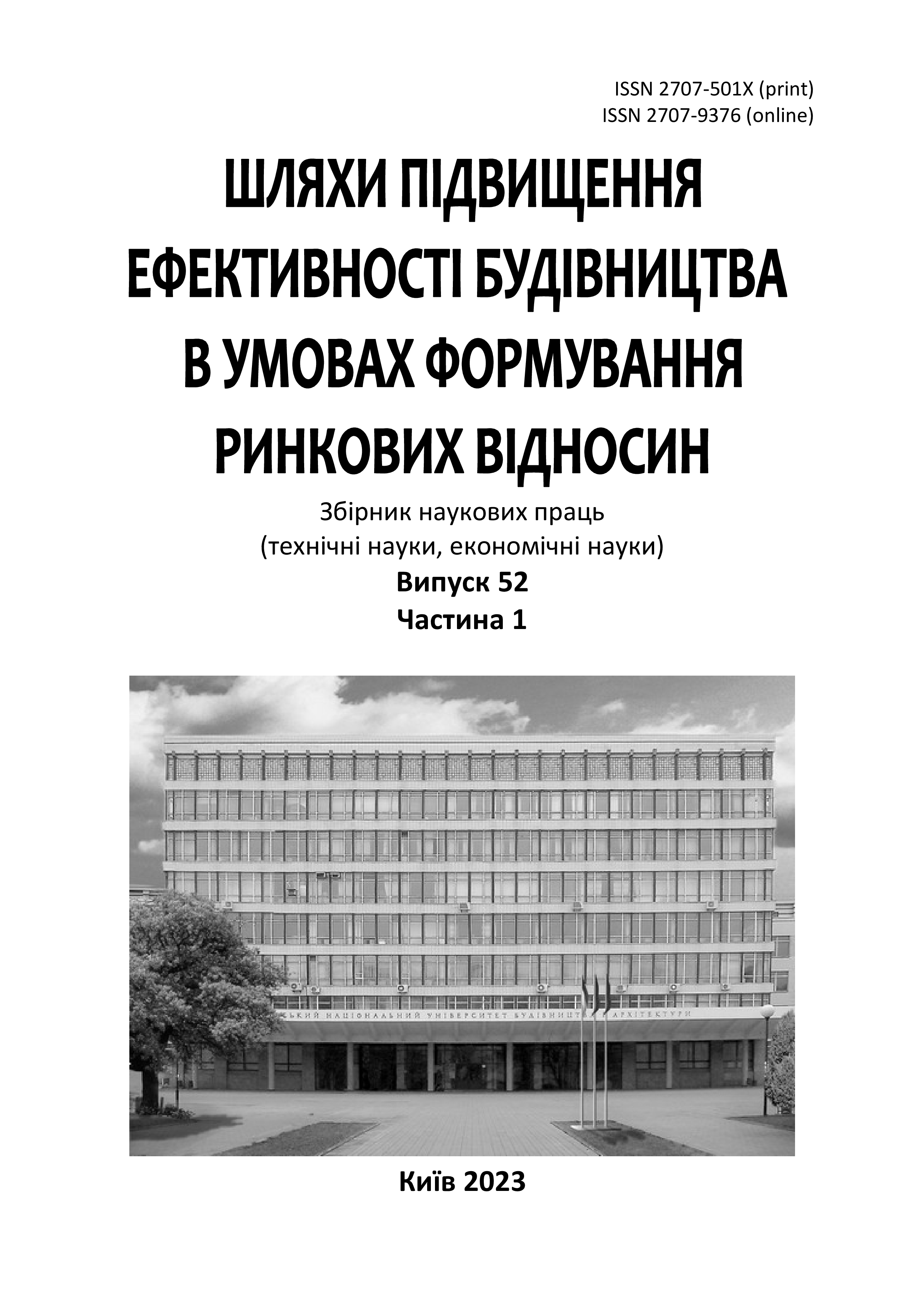Setting the parameters of the burnout rate of samples of flame-retardant cellulose-containing materials
DOI:
https://doi.org/10.32347/2707-501x.2023.52(1).90-100Keywords:
fire protection, flame retardant, processing, cellulose-containing materials, woodAbstract
The paper deals with the issues of fire protection of cellulose-containing materials, in particular sailcloth and wood. The combustion process of materials is influenced by their physical properties: density, thermal conductivity, heat capacity, as well as a number of other factors, such as humidity, the ratio between the reacting surface and the volume or mass of the material that is ignited, its position in the heat flow, air flow velocity or draft, and the degree of heat concentration during combustion. The description of the behavior of fire retardants and coatings, including swelling coatings, at the time of formation of the insulating structure is a separate and complex task. In general, it covers both stages of the thermal protection process: as a rule, the decomposition of flame retardants under the influence of temperature with heat absorption and the release of non-combustible gases, and subsequently the swelling of the coating formed during fire protection. Therefore, there is a need to study the conditions for the formation of a barrier to thermal conductivity and to establish the mechanism of fire protection from layer to layer of coke. In this regard, a study of the fire protection process during the operation of the fireproof coating was carried out. As a result of the research, it was found that the burnout rate of fire-retardant cellulose-containing materials depends on four parameters, namely, the parameter characterizing the intensity of flame combustion development (α, s-1), the intensity of suppression of combustion reactions due to fire protection of materials (γ, s-1), the intensity of material combustion at the initial moment of time (ω0, kg/(m2·s2)), and the initial burnout rate (u0, kg/(m2·s)). The dependence of the extreme moment of time was obtained, in which the mass burnout rate of a sample of fire-protected material is minimal (the burnout rate of wood samples treated with fire-protective agents (compared to untreated ones) decreases by 3.6 times), which makes it possible to more effectively determine the effect of impregnating compositions on the burning of samples of cellulose-containing materials.
References
Вінтонів І.С., Сопушинський І.М., Тайшінгер А. Деревинознавство: навч. посіб. 2-е вид., доповн. Львів: Апріорі, 2007. 312 с.
Цапко Ю.В., Бондаренко О.П., Цапко О.Ю. Вогнезахист виробів з текстильних метеріалів. Теорія та практика: монографія. К.: ФОП Ямчинський О.В., 2021. 139 с.
Бабашов В.Г., Беспалов А.С., Истомин А.В., Варрик Н.М. Теплозвукоизоляционный материал, приготовленный из растительного сырья. Огнеупоры и техническая керамика. 2017. 58 (2), 208–213.
Danilov V., Ayzenshtadt A., Makhova T. Obtaining and characterization of wood-mineral Composites. International Multidisciplinary Scientific GeoConference Surveying Geology and Mining Ecology Management, SGEM. Vol. 18(6.1), 2018. Р. 347-354.
Tsapko Yu., Kyrycyok V., Tsapko А., Bondarenko O., Guzii S. Increase of fire resistance of coating wood with adding mineral fillers. MATEC Web of Conferences, 230 (2018), 02034. Р. 1-6. DOI:10.1051/matecconf/201823002034.
Tsapko Yu., Tsapko А. Modeling a thermal conductivity process under the action of flame on the wall of fireretardant reed. East European Journal Enterprise Technologies. 2018, Vol. 2, №10 (92). Р. 50-56.
ДСТУ 8829:2019. Пожежовибухонебезпечність речовин і матеріалів. Номенклатура показників і методи їхнього визначення. Класифікація. К.: ДП «УкрНДНЦ», 2020. 78 с.
ДСТУ 4155-2003 Захист від пожеж. Матеріали текстильні. Метод випробовування на займистість (ІMO-Res. A. 471 (XІІ), NEQ). Київ : Держспоживстандарт України, 2003. 7 с.
Alexandrescu L., Popa M., Georgescu M., Leca M. Development of new processes intended to obtain fireproof non-asbestos textiles covered with nanodispersions based on modified polychloroprene elastomers. Industria Textila. 2013. Vol. 64 (5). Р. 277-284.
Xiao N., Zheng X., Song Sh., Pu J. Effects of Complex Flame Retardant on the Thermal Decomposition of Natural Fiber. BioResources. 2014, Vol. 9, Issue 3. Р. 4924-4933.
Nine Md. J., Tran Diana N.H., Tung Tran Thanh, Kabiri Sh., Losic D. Graphene-Borate as an Efficient Fire Retardant for Cellulosic Materials with Multiple and Synergetic Modes of Action. ACS Applied Materials & Interfaces. 2017, Vol. 9 (11). Р. 10160-10168. DOI:10.1021/acsami.7b00572.
Ciripi В.К., Wang Y.C., Rogers B. Assessment of the thermal conductivity of intumescent coatings in fire. Fire Safety Journal. 2016, Vol. 81. P. 74-84.
Carosio F., Kochumalayil J., Cuttica F., Camino G., Berglund L., Oriented Clay Nanopaper from Biobased Components Mechanisms for Superior Fire Protection Properties. ACS Appl. Mater. Interfaces, 2015, 7, 10, 5847–5856. DOI:10.1021/am509058h.
Carosio F., Alongi J. Ultra-Fast Layer-by-Layer Approach for Depositing Flame Retardant Coatings on Flexible PU Foams within Seconds. АCS applied materials & Interfaces. 2016, Vol. 8, Issue 10. Р. 6315-6319.
Md Nasir K., Ramli Sulong N.H., Johan M.R., Afifi A.M. An investigation into waterborne intumescent coating with different fillers for steel application. Pigment & Resin Technology. 2018. Vol. 47, Issue 2. P. 142–153. DOI: https://doi.org/10.1108/prt-09-2016-0089
Downloads
Published
How to Cite
Issue
Section
License

This work is licensed under a Creative Commons Attribution 4.0 International License.
Authors who publish with this journal agree to the following terms:
- Authors retain copyright and grant the journal right of first publication with the work simultaneously licensed under a Creative Commons Attribution License that allows others to share the work with an acknowledgement of the work's authorship and initial publication in this journal.
- Authors are able to enter into separate, additional contractual arrangements for the non-exclusive distribution of the journal's published version of the work (e.g., post it to an institutional repository or publish it in a book), with an acknowledgement of its initial publication in this journal.
- Authors are permitted and encouraged to post their work online (e.g., in institutional repositories or on their website) prior to and during the submission process, as it can lead to productive exchanges, as well as earlier and greater citation of published work (See The Effect of Open Access).

